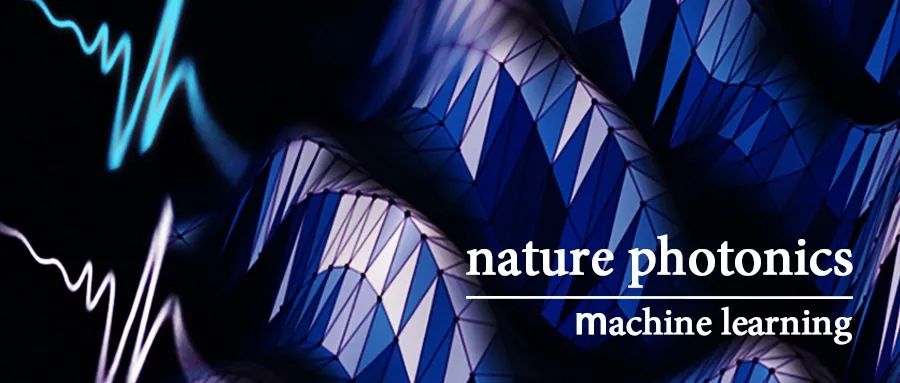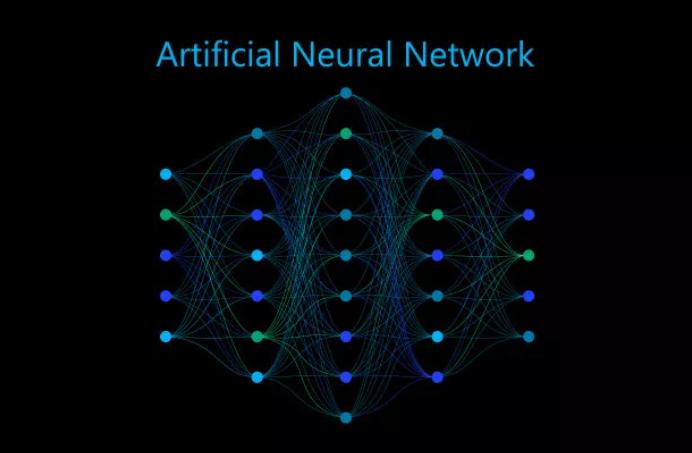Application of "Machine Learning" in Ultrafast Photonics
China Optics of the Light Center of the original Changguang Institute is included in the topic # Intelligent Photonics 1# Ultrafast Laser 1.
Written by Cyan (Ph.D. student, University of Bristol, UK)
Author’s recommendation
Professor Goëry Genty (University of Tampere, Finland):
Our international cooperation team published a summary article in Nature Photonics on the topic of "Machine Learning and Applications in Ultrafast Photonics". A major feature of this review is that it provides a series of basic concepts for readers (such as students) who are not familiar with related fields.
At present, people don’t know how to make the best use of artificial intelligence and machine learning to promote future research, but the application of ultrafast photon technology in controlling complex laser systems and generating customized beams has not fully exerted its potential. We have solved this problem now and summarized different machine learning methods that can be used to study and control ultrafast photonic systems.
Our goal is to make readers who are not experts in this field fully understand this review and provide them with the basic knowledge of machine learning applied to ultrafast photonics. This paper mainly summarizes the design and optimization of laser and the research and control of ultrafast dynamics (the change of light field properties).
For each case, we try to explain how machine learning technology may be applied to the actual cases of interest, the benefits they can bring and the future research direction. It also explains different algorithms in machine learning and some guidelines on how to use them, which provides a quick start for researchers who are not familiar with this field.

Artistic renderings: the application of artificial intelligence in ultrafast photonics. The figure shows how the neural network controls the properties of the incident field by seeking the optimal value in a complex multidimensional space. This concept can eventually help to generate light beams with special properties. (Source: Tampere University, Finland)
With the landing of various intelligent applications, machine learning, artificial intelligence and other professional terms that use statistical techniques and numerical algorithms to perform specific tasks have become well known to the public. In optics, the early application of machine learning mostly appears in the form of genetic algorithm, which is used for pattern recognition, image reconstruction, aberration correction or optical element design.

Figure 1. Machine learning (artistic renderings)
Source: Changchun Institute of Optics and Mechanics, Light Academic Publishing Center, New Media Working Group.
Ultrafast lasers play an important role in many fields of photonics, such as communication, material processing and biological imaging. It directly contributed to the research results of three Nobel Prize levels:
Femtosecond Laser Coherence Control (1999) [Recommended Reading]
Precision Frequency Comb (2005) [Recommended Reading]
High Power Femtosecond Pulse Amplified by Chirped Pulse (2018) [Recommended Reading]
However, the design and operation technology of ultrafast lasers have not changed much compared with those when they were first developed decades ago. With the increasing demand for the quality of light source in various new applications, the complexity of laser is increasing day by day, which means that the amount of data in the process of laser design and optimization will explode, making the traditional design optimization scheme no longer applicable.
The high-speed processing of a large amount of data is the field that AI technology such as machine learning is good at. Therefore, the combination of the latest progress of ultrafast photonics with powerful tools such as artificial intelligence and machine learning provides a new way to overcome this bottleneck.
Professor Goëry Genty from Tampere University, Finland [introduction], together with scholars from three other universities in Europe, reviewed the specific fields in which machine learning technology has been applied and breakthroughs have been made in ultrafast photonics; Consider the future challenges and research direction, and provide a feasible research process roadmap; It also points out the applications that are expected to have a significant impact in the next few years.
1. Application of machine learning in ultrafast photonics
In view of the excellent performance of machine learning in data classification, identifying hidden structures and processing parameters with large degrees of freedom, many important scientific research achievements have come out, especially in the fields of big data processing and reverse design. As shown in Figure 2, different machine learning strategies and related architectures are described, and the core concepts, implementation methods and applications in ultrafast photonics are listed.

Figure 2. Main concepts and implementation methods of machine learning in ultrafast photonics.
Source: Nature Photonics/translation: Cyan (writer)
Figure 3 describes the general application model of machine learning in ultrafast photonics. A) The diagram depicts the training stage, in which the control signal and the measuring device are used to detect the parameter space and map the corresponding operating state respectively. Then, the collected data is input into the machine learning algorithm for training.

Fig. 3. Machine learning process of controlling components with feedback loop and control algorithm.
A) training stage b) machine learning assistant stage
Source: Nature Photonics/translation: Cyan (writer)
B) Figure depicts the self-adjusting process, in which the real-time operating state characteristics of laser and a simplified measuring system are fed into electronic equipment controlled by machine learning algorithm to lock the system to an ideal mechanism. This is where machine learning is particularly powerful, because once trained, the algorithm can quickly select parameters to achieve the best operation.
When using the machine learning model, you should also pay attention to the following items:
Selection of architecture and related parameters
accuracy control
Training data
Overfitting avoidance
Robustness and Transfer Learning
According to the selection of the above structural parameters, with different algorithms in the implementation method circle in Figure 2, such as genetic algorithm, feedforward neural network, convolutional/recursive neural network and unsupervised learning, the specific target design can be realized quickly.
Second, the laser design and optimization
(1) Self-tuning of ultrafast fiber laser
Since the pulse state is influenced by many factors, such as dispersion, nonlinearity and dissipative effect, the operation of laser system is actually very complicated. This complexity, on the one hand, has greatly improved the quality of light sources; On the other hand, it also poses great challenges for control and optimization.
This difficulty stems from the need to achieve the balance of multiple degrees of freedom (or control parameters) in order to achieve stable operation or achieve a specific mechanism. When multiple output characteristics need to be optimized at the same time, the traditional optimization method will no longer be applicable. The optimal design method based on machine learning is especially suitable for this system with greatly increased complexity.
(2) Coherent dynamic control
In addition to directly controlling the laser as mentioned above, external cavity modulation technology is also widely used in pulse shaping of ultrafast pulses. This kind of optimization involving multiple related parameters, machine learning can obviously surpass other forms of automatic optimization control theory. For example, Professor Daniel B. Turner’s team showed people how the adaptive neural network algorithm can control the pulse shaper and significantly accelerate its implementation, and its convergence speed is about 100 times faster than the traditional algorithm.
Third, the characteristics and control of ultrafast pulse propagation dynamics
(1) Hidden physical model
The application of machine learning to derive prediction models from sparse or noisy measurements has been successful. With the development of technology, a concept called "hidden physical model" is put forward, that is, by using "physical information neural network" to analyze dynamic data samples, the closed mathematical model or nonlinear differential equation that controls the physical system can be automatically identified. This method should also be used in ultrafast photonics to analyze the transmission dynamics of pulses in optical fibers. In addition, this model-free method is also used to predict the coherent dynamics of soliton-like transmission. However, at present, this kind of work is only based on numerical data-the next step in this field is obviously to explore the control model from the experimental data set.
(2) Chaotic system and instability
In the chaotic system, the measurement system that directly captures the breathing laser [] imposes serious restrictions on the experiment in complexity.
Machine learning can directly solve this problem. By training neural network to determine the time characteristics of chaotic field, only the intensity characteristics of spectrum need to be measured (which is easier to measure). Recently, a similar method has been used to determine the peak power, duration and time delay of extreme wandering solitons in noise continuous spectrum. In addition, similar applications have been extended to more complex systems, such as those observed in transient laser behavior and extreme events.
(3) Multidimensional system
One of the main advantages of neural network is that it can effectively analyze the characteristics of multidimensional systems. This is especially suitable for multimode optical fiber systems, because space-time coupling greatly increases the complexity of parameter space and nonlinear propagation dynamics. Uurtein of the Federal Institute of Technology in Lausanne, Switzerland, drives a spatial light modulator through a neural network to generate supercontinuum spectrum in a step index distribution fiber, which proves the potential of machine learning.

Figure 4. Neural network structure (artistic effect diagram)
Source: Changchun Institute of Optics and Mechanics, Light Academic Publishing Center, New Media Working Group.
IV. Prospects and Challenges
Ultrafast photonic systems are very complex and usually nonlinear, and their dynamic characteristics are very sensitive to internal parameters and external disturbances. Due to the demand for stability, anti-interference robustness, adjustability and adaptive control, the complexity of these systems is increasing day by day. Machine learning technology, which can find hidden features and adapt independently when contacting new data, may play an important role in the next generation of ultra-fast systems and applications.
At the same time, in the application of ultrafast photonics, machine learning also faces the following challenges:
1) When using recursive networks, it is very important to sample pairs along the evolutionary dimension (time or distance) to extract and reproduce the long-term evolutionary structure. Therefore, memory limitation will become a problem, especially in lasers that require multiple cavity round trips to stabilize.
2) Unsupervised learning analysis divides data into subsets with similarities, but it lacks key information about the criteria used for classification.
3) When the photon system is processed in real time, it needs the ability to manage a large amount of data and a hardware framework that can cope with the ultra-fast processing speed.
To sum up, machine learning provides effective solutions for many problems encountered at this stage, which makes ultrafast photonics play an effective role in a wider range of fields. As Professor Goëry Genty said: "We believe that machine learning can play an important role in the next generation of laser light sources. Our work can inspire researchers to fully tap the potential of artificial intelligence in ultrafast photonics and its many applications. "
Article information
Genty, G., Salmela, L., Dudley, J.M. et al. Machine learning and applications in ultrafast photonics. Nat. Photonics (2020).
Original address
https://doi.org/10.1038/s41566-020-00716-4

【】
Welcome the research group to submit the publicity draft of the results.
Reprinted/cooperated/contributed by the research group, please add WeChat: 447882024.
Previous recommendation
Light: Science & Applications | Noise reduction of light: suppression of backscattering of light.
Nature Photonics | "remote control" of polarized light
Progress of Science | Micro Spectrometer in the Past 30 Years
New publication recommendation
Open manuscript: Light: Advanced Manufacturing
ISSN 2689-9620
Periodical website: www.light-am.com
Opening manuscript: eLight
CN 22-1427/O4 ISSN 2662-8643
Periodical website: elight.springeropen.com
This is the 1631st article published by China Optics. If you think it is helpful, forwarding it to the circle of friends is our greatest recognition.
【】
Original title: Application of Machine Learning in Ultrafast Photonics
Read the original text